Categories
Product Recommended
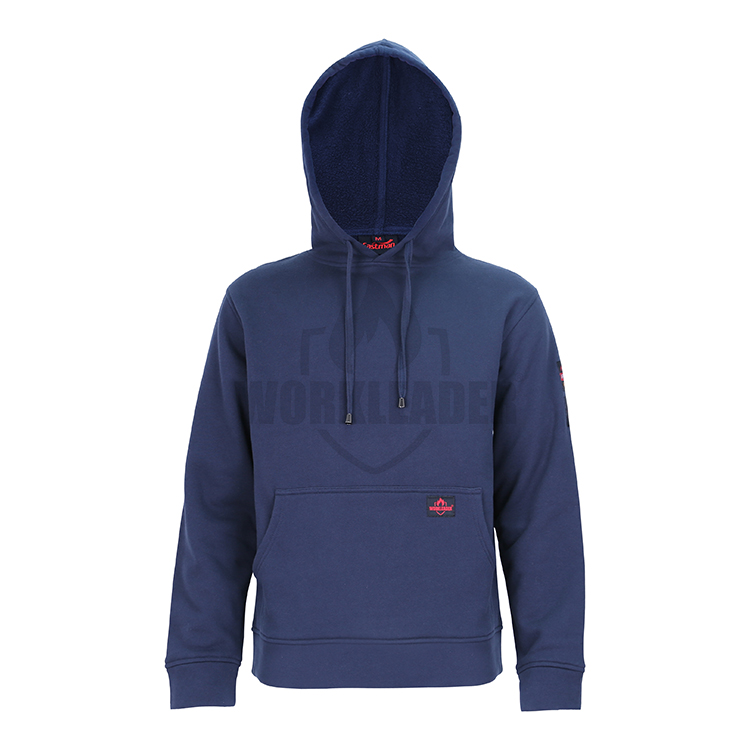
Flame Resistant Fleece Hoodie Suit
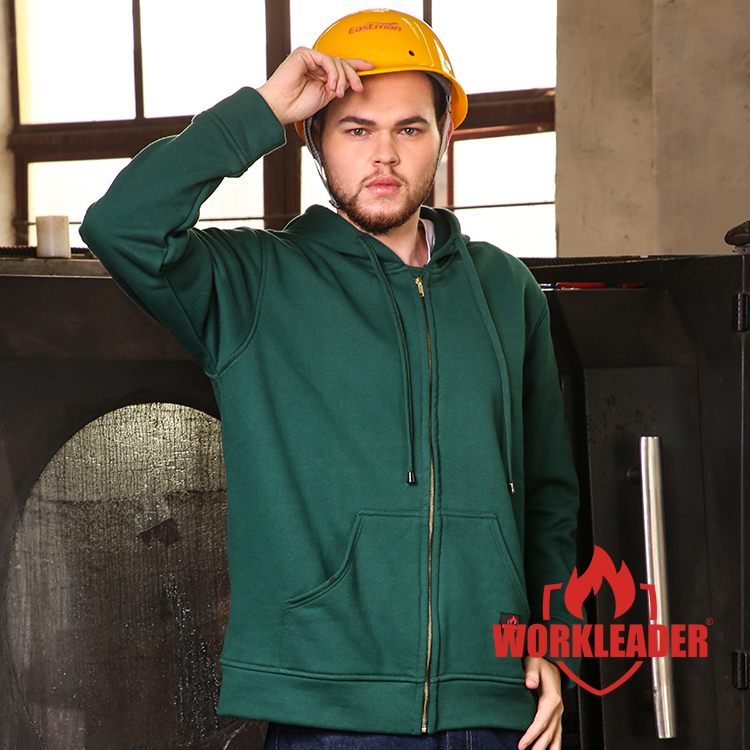
Knit 100% Catton Fire Retardant Hood
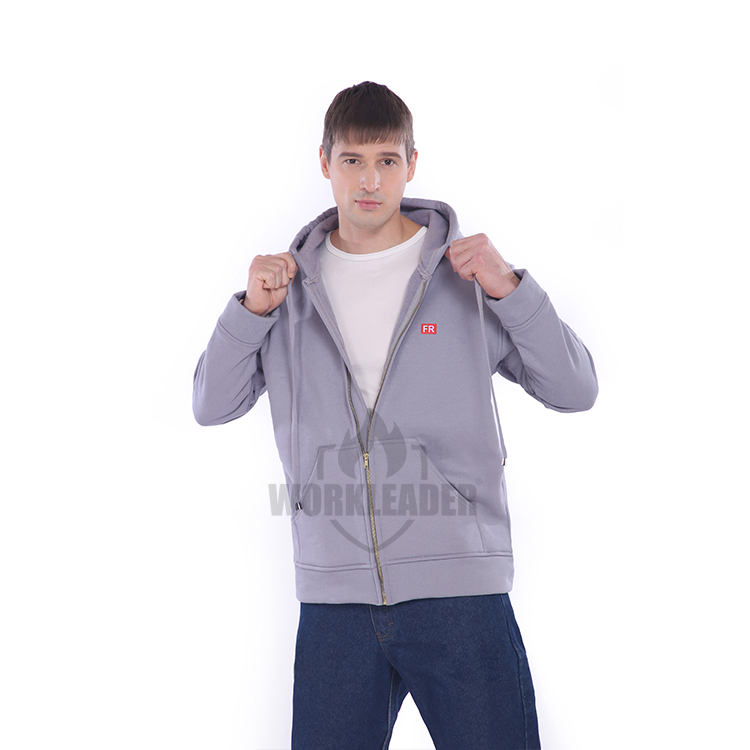
Flame Retardant Hoodies For Worker
Coverall
What Is Coverall
Coveralls are a type of clothing that covers the entire body. They are often worn by people who work in dirty or dangerous environments. The purpose of coveralls is to protect workers from exposure to contaminants such as oil, paint and chemicals. They can also be used to protect the workers' clothes from getting dirty or damaged while they are working on a job site.
Benefits Of Coverall
- Protection against weather
- It is certainly hard to work when the temperature falls to an unacceptable point. In order to keep going, laborers need garments that can add an extra layer of warmth. For workers who need both warmth and workplace safety, coveralls are best.
- Clothing protection
- People cannot afford to get their regular clothes dirty while working in a dirty environment. Dirt is a common hazard that workers face on daily basis. Apart from professionals, individuals can also wear coveralls while performing tasks like replacing a kitchen tap.
- Warmth
- Laborers often wear coveralls to protect against many outdoor elements, including the freezing cold of winter. Coveralls of varying weights are available to protect you no matter the conditions. Waterproof styles are also available to keep you dry and warm no matter the weather.
- Visibility
- Highway workers may use bright orange coveralls to maintain visibility to motor vehicles. The standard color scheme is UCP, or Universal Camouflage Pattern. The desert scrub color pattern was tested in urban, woodland, and desert environments and found to perform best.
Why Choose Us
-
01/
Professional team and equipmentWith more than 30 years of production experience, we have a mature team and equipment. From fabrics to garments, we use smart machines. We are efficient and cost-effective.
-
02/
MarketOur garments have been exported to many countries and regions in the world, such as Europe, North America, South America, Middle East, etc. We export 150 X 40 FCL every year.
-
03/
Provide the best quality productsWe provide the highest quality fibers, fabrics and finishes to create the most comfortable, durable and ultimate protective PPE and FR clothing.
-
04/
Our serviceYour satisfaction is always our top priority. If you need real-time assistance, please feel free to contact us through our customer service hotline 0371-86173598.
The Difference Between Coveralls And Overalls
The main difference between coveralls and overalls lies in their design and coverage. overalls typically cover the torso and legs, but leave the arms exposed. On the other hand, coveralls cover the entire body, including the arms, legs, torso, and head, depending on the design.
Both coveralls and overalls are designed to protect against different hazards, including electrical, chemical, thermal, and physical hazards. For example, electrical hazards can cause serious injury, so electrical workers typically wear overalls that are made of non conductive materials. Chemical hazards can cause skin irritation, so workers handling chemicals wear coveralls that are made of chemical resistant materials.
What Do You Wear Under Coveralls?
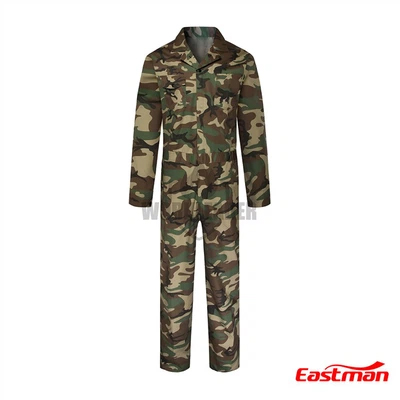
- No matter what the weather is, it is best to choose long sleeves and pant legs under coveralls as having this base layer on your skin will help in avoiding undesirable chafing caused by wearing coveralls throughout the day. Coveralls are made to be worn over regular clothes. Although you do not have to wear pants and shirts under coveralls, it is often advisable to prevent chaffing of the skin. Also, depending on the work environment it is easy to take the coveralls off when you leave the job area.
How Do I Size The Coveralls I Need?
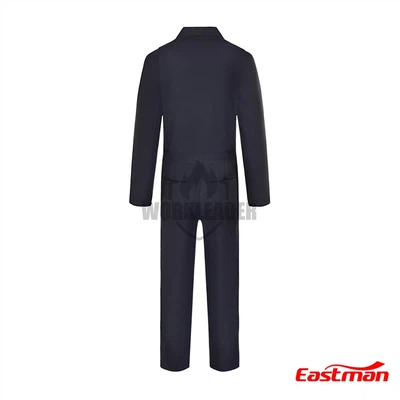
- It is always best to choose a work coverall that is a little larger than your waist size. For example, an individual with a waist size of 36 and a chest size of 38 should choose a coverall size of 38. For bib overalls, you need to choose a size 4 inches bigger in the waist than your regular pant waist. Bib overalls run long and have a long rise so you may want to choose ones that are 2 inches shorter in length than your regular pant length. For example, if your pant size is normally a 40"long you should choose a 38"length.
How to Choose The Right Coverall
Sturdiness
Depending on the job task good quality and the type of fabric is very important. For example mechanics tend to prefer the polyester/cotton fabric as they are more durable then 100% cotton fabric. Mechanics tend spend a lot of time in contact with the ground which can wear an inappropriate cotton coverall out very quickly.
Safety protection
When considering the appropriate fabric type and front closure it is very import to factor in what the coveralls are protecting a person from. For example welders should have 100% cotton because in case there is too much flame that starts to burn the cotton will burn whereas the polyester/cotton blend can melt and burn right into a person's skin causing a much more severe injury.
Sizing and comfort
When choosing the size of coveralls it is very important to ensure the coveralls do not fit too tight which inhibits the freedom of movement or too loose making them baggy and a possible hazard as they could get caught in moving machinery.
Types Of Coverall
Basic coveralls
Basic coveralls is suitable for a wide range of occupations, twill action back coveralls provides general protection against dust and dirt.
Disposable coveralls
Single-use, disposable coveralls are used in environments where contact with grime, paint, aerosols, or non-hazardous liquids would quickly ruin even the sturdiest reusable coveralls.
Flame-resistant coveralls
Flame-retardant coverall protects workers who come into contact with flammable materials or open flames.
Insulated coveralls
Insulated coveralls provide warmth in cold work environments, such as winter construction sites or temperature-controlled warehouses. These coveralls are a typical example of insulated coveralls.
Arc-resistant coveralls
Electricians and other employees who work with or near electrical equipment may require arc-resistant coveralls, which protect against electrical shock and arc flash damage.
Waterproof coveralls
As the name implies, waterproof coveralls protects against rain, sleet, and wet work environments.
Hi-vis coveralls
The durable nature of coveralls make them ideal for construction sites, oil refineries, and other locations where high-visibility garments are required for employee safety. High-visibility winter coveralls meets ANSI Class 3 visibility standards while also keeping you warm and dry.
Mechanic jumpsuit
Also known as mechanic coveralls, the mechanic jumpsuit fits snugger than most coveralls, reducing the risk of the garment getting caught in machinery. Mechanic coveralls also tend to have more pockets and tool loops than typical coveralls.
Women's coveralls
Much like other types of women's blue-collar workwear, there tend to be fewer coveralls specifically designed for the female body. However, those that are available are tailored to give women a better fit than men's coveralls.
Material Of Coverall

- The materials used for coveralls are mainly cotton, polyester or functional flame retardant fabrics. All of these materials have different weights, and the higher the weight of the fabric, the better the quality. Different types of fabrics have different properties. Coveralls made of pure cotton are more comfortable, thicker, denser, more durable, and suitable for all kinds of weather.
Application of Coverall
Machinery manufacturing industry
The machinery manufacturing industry requires workers to frequently come into contact with machinery and chemicals, which may be harmful to the human body. Therefore, workers need to wear coveralls to prevent inhalation of foreign matter and skin contact with harmful substances.
Petrochemical industry
The working environment in the petrochemical industry is complex and may involve hazardous gases, chemicals and other dangerous substances. Wearing coveralls that meet safety standards can reduce the chances of workers coming into contact with harmful substances and protect workers' safety.
Cleaning service industry
Staff in the cleaning service industry often need to come into contact with various chemicals such as detergents and disinfectants. Wearing coveralls that meet the requirements can reduce the risk of cleaners being harmed by harmful substances.
Construction engineering industry
The working environment in the construction engineering industry is usually harsh, and workers need to come into contact with hard materials such as building materials and steel bars for a long time. Wearing a coveralls with good performance can reduce physical fatigue and prevent accidental injuries such as scratches and burns.
How to Wash a Coverall
Run a check
Examine the garment before you throw it in the wash. Make sure that buttons and zippers are closed as also any velcro strips that may be on the garment. This will help prevent them from getting damaged and decrease the wear caused to the fabric. Check pockets for loose change or any other objects that might have been left there inadvertently. For garments with reflective properties, turn them inside out before washing. This way the reflective strips remain undamaged and will not get streaked either.
Use appropriate products
When cleaning coverall, it is essential to choose the right type of detergent. If it's too harsh, then it can cause discoloration of the fabric and thus, lead to a decline in quality. Similarly bleach can weaken the fibers and cause damage to coverall, especially those with fire retardant coveralls.
Get the temperature right
Coveralls garments must be washed at the right temperature to rid them of all residue and stains. Dirt, oil, and mud stains must be cleaned immediately as failure to do so can make it extremely difficult to remove them later. Also, if chemicals and hydrocarbons are not fully eliminated, it can prove risky to the wearer while out on a job. Ensuring the right temperature is also necessary to prevent the garment from shrinking or becoming loose.
Dry it properly
After washing coveralls the right way, it needs to be dried the right way too. Improper drying techniques can cause the garment to lose its shape or shrink. Use of too much heat is just as bad as use of too little heat. Thus, it is essential to get the balance just right.
How Often Should I Wash Coverall?
Coveralls should be washed after each use, especially if they are exposed to hazardous substances, dirt, or heavy perspiration. Regular washing helps maintain hygiene, extends the garment's lifespan, and ensures it remains effective in providing protection.
How Do I Store Coveralls When Not In Use?
Store coveralls in a dry, clean area with enough space to hang wet garments which need drying. If damp clothes are left folded or screwed up, the fabric is at risk of deteriorating or rotting. Never store clothing in direct sunlight or leave garments exposed to other sources of UV light. Also, avoid keeping coveralls near chemicals, oil or other hazardous substances. Correct storage of coveralls reduces the likelihood of colour fading, contamination and damage from harmful substances, high humidity, heat and light. For added protection, consider using garment bags to keep them free from dust and contaminants.
FAQ
-
A: FR vests are made from materials like aramid fibers (e.g., Nomex), modacrylic blends, FR-treated cotton, polybenzimidazole (PBI), and Kevlar. These materials are chosen for their flame resistance, durability, and comfort.
-
A: Made of flame-resistant fibers that allow it to resist ignition or quickly self-extinguish if it does catch fire. The fibers also resist melting, tearing, or breaking and are thermally insulated to protect the wearer from heat and life-threatening burns.
-
A: To choose the right size FR vest, measure your chest circumference and compare it to the sizing chart provided by the manufacturer. Ensure the vest fits comfortably over your regular work clothes without being too tight or too loose, allowing for ease of movement and layering if necessary.
-
A: FR vests are typically designed to be worn over regular clothing. They should fit comfortably over work shirts or jackets while providing the necessary protection. It's important to ensure the vest covers the torso adequately without hindering movement.
-
A: It's clear that FR vest is an important factor in workplace safety. Several jobs require FR protection, including oil and gas workers, electrical utility workers, welders and fabricators, firefighters, and construction workers.
-
A: In general, look for compliance with NFPA 70E and ASTM F1506. ASTM F1506 has its own set of labeling requirements, including that the arc rating should be indicated on the garment itself. For FR Rainwear: Look for ASTM F1891 on arc flash rainwear and ASTM F2733 on flash fire rainwear.
-
A: Not all FR vests are waterproof. Some may offer water-resistant properties, but additional waterproofing treatments or layering with a waterproof jacket might be necessary for full protection in wet conditions. Always check the product specifications for water resistance.
-
A: Wash separately in a Normal or Cotton cycle at any water temperature up to a maximum of 140ºF (60ºC). Use any typical home laundry detergent. Do not use soap (tallow soap containing animal fats). Turn garments inside out before washing to reduce streaking from abrasion.
-
A: FR vests can be reused after exposure to flames if they remain intact and undamaged. However, if the vest shows signs of burns, holes, or significant wear, it should be replaced immediately to ensure ongoing protection.
-
A: Look for features such as durable and flame-resistant materials, reinforced stitching, multiple pockets, high-visibility options, comfortable fit, adjustable closures, and certifications indicating compliance with safety standards.
-
A: An FR vest is specifically designed to resist ignition and self-extinguish, providing protection against flames and heat. A regular safety vest typically focuses on visibility and may not offer any flame-resistant properties.
-
A: FR vests are available in various colors, including high-visibility options like neon yellow or orange. Color choices can help with visibility and comply with specific workplace safety requirements.
-
A: An FR vest is an important piece of personal protective equipment that protects workers from electric arc and flame hazards. They provide a barrier between the worker's body and the source of heat.
-
A: Cotton-nylon blends will generally remain flame-resistant for anywhere from 18 months to 30 months if they are washed and worn once a week. The most long-term FR fabric solution for uniforms is a synthetic blend, which can last from 24 months to four years, depending on how it is cared for.
-
A: An FR vest should fit comfortably over your work clothing without being too tight or restrictive. It should allow for a full range of motion and cover your torso adequately. Adjustable features such as straps or closures can help achieve the right fit.
-
A: Store an FR vest in a cool, dry place away from direct sunlight, chemicals, or sharp objects. Hanging the vest can help maintain its shape and prevent wrinkles or damage. Regularly inspect the vest before use to ensure it remains in good condition.
-
A: This is why manufacturers put expiration dates on vests. If the FR vest has been properly cared for it will still be good after the expiration date, but for FR vests should be replaced at regular intervals, generally every 5 years.
-
A: If the vest is too loose, it could get caught on something and cause you to stumble or lose your balance. If the vest is too tight, it will be uncomfortable and may restrict your movement. A good way to test the FR vests fit is to put it on and raise your arms above your head.
-
A: There are certain types of employees that are required to wear flame-resistant clothing, due to the nature of their jobs and the hazards they may be exposed to. This includes: Workers who are exposed to energized circuits and their parts, when operating at 600 or more volts.
-
A: Regularly clean your FR vest to remove dirt and grime that may compromise its effectiveness. However, when permanent stains, fading reflective material, wear and tear, or non-compliance with safety standards become evident, it's time to replace your FR vest.
We're professional bib overall manufacturers and suppliers in China, specialized in providing high quality products with low price. We warmly welcome you to wholesale or buy discount bib overall in stock here from our factory. Contact us for customized service.